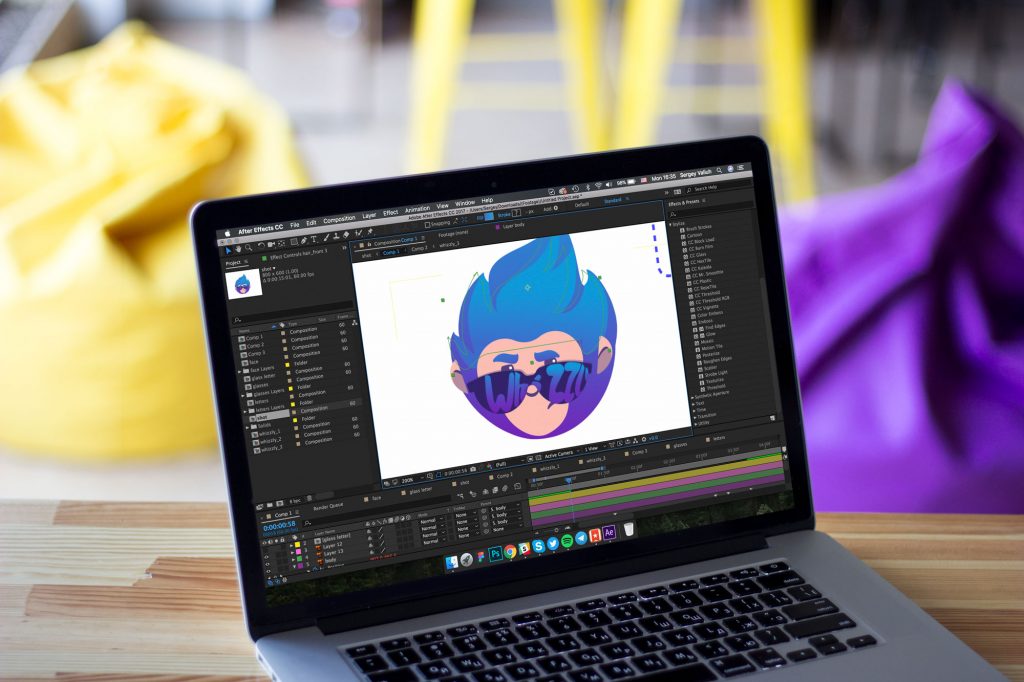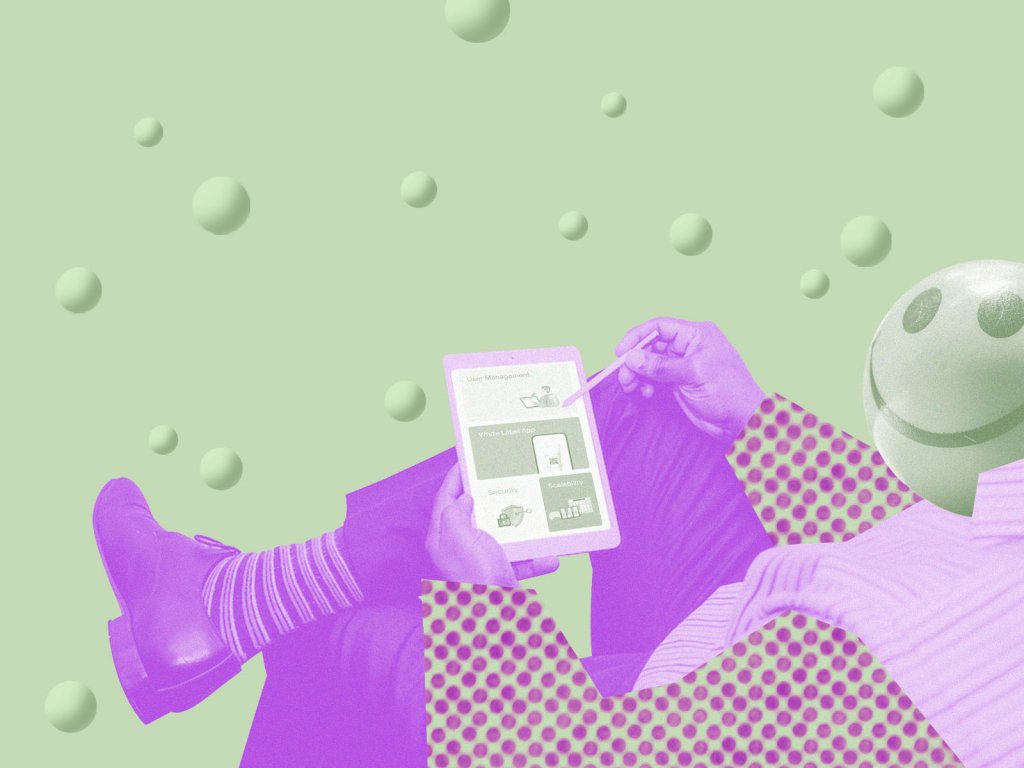Historically, one of the most powerful sources teaching us about the laws and techniques of visual storytelling has always been children’s books. With such a target audience limited in reading skills and word decoding, pictures become the major and the most effective way to play the story igniting the mechanisms of imagination and emotions.
Our today’s article is also about it: welcome to check three case studies on book illustrations by the tubik team artists Marina Solomennikova and Yaroslava Yatsuba. Here you will see the different styles and consistent design approaches to developing characters and backgrounds as well as finding interesting details and compositions that create the atmosphere and strengthen the narration. Enjoy tons of illustrations and get inspired!
What Is Visual Narration
Just for a quick reminder, visual storytelling (aka visual narration) is uncovering a story via visual media (photos, illustrations, animations) as a primary tool of communication with the audience. It works well as a global approach to not only books and editorials but also marketing campaigns, brand promotion, even user interfaces – because people love stories. Stories make participants, actions, objects, situations, and environments not only logically connected but also more memorable and emotional.
However, in contrast to the projects aimed at teens and adults, in the case of picture books for children, it’s important to consider that the target readers have absent or low abilities to decode abstract signs like text, so the major source of their engagement in the story is pictures. That’s what we also took into account working on the following sets of illustrations.
Another aspect to cover was to set the needed level of originality. Children’s book author Alan Durant once mentioned in his article for Penguin Books: “So why would any child who doesn’t know you want to listen to your story? The theme doesn’t have to be original – … – but the way you treat it does. Make it uniquely yours”. So, the balance of recognizability and originality was the primary challenge for the illustrators working on the book illustrations we show below.
All the cases featured here are united by the nature motifs and animalistic characters but each performs them in an original style and different story.
Case 1: Bunny Adventures Tale
This children’s book called Easter Bunny Adventures was a side project by tubik, which we started with the creative objectives to practice narrative illustration for books and boost the skills in visual storytelling for kids.
In this case, there was no hesitation about the character as the fairytale was thematically devoted to the Easter celebration. So, the creative team instantly decided upon a bunny as a hero, an animal character performing anthropomorphically which means it behaves like a human, a kid to be more precise. The main storytelling takes place around the basket of Easter eggs which fell down and all the eggs got scattered around the forest. The main character Little Bunny goes to help his family and collect the lost eggs. However, on that way, he meets many animals that ask him to share the Easter egg with them and in turn, they give him a treat for his kindness. So, the little hero gets back home with no eggs but with many new friends behind, and his family reassures him that being kind and generous is the best he could do.
Now, look how this story was packed in illustrations building a flow of visual narration.
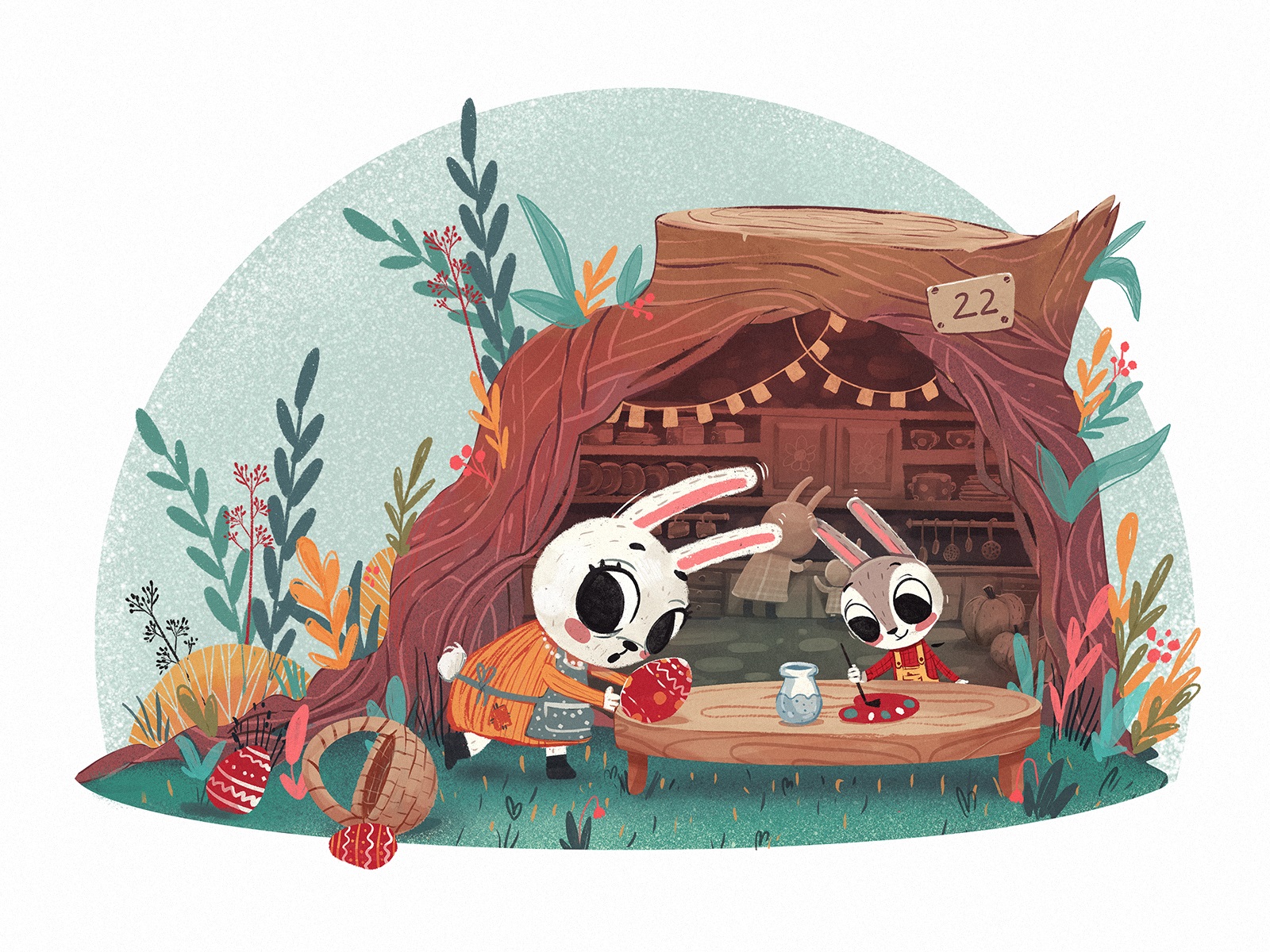
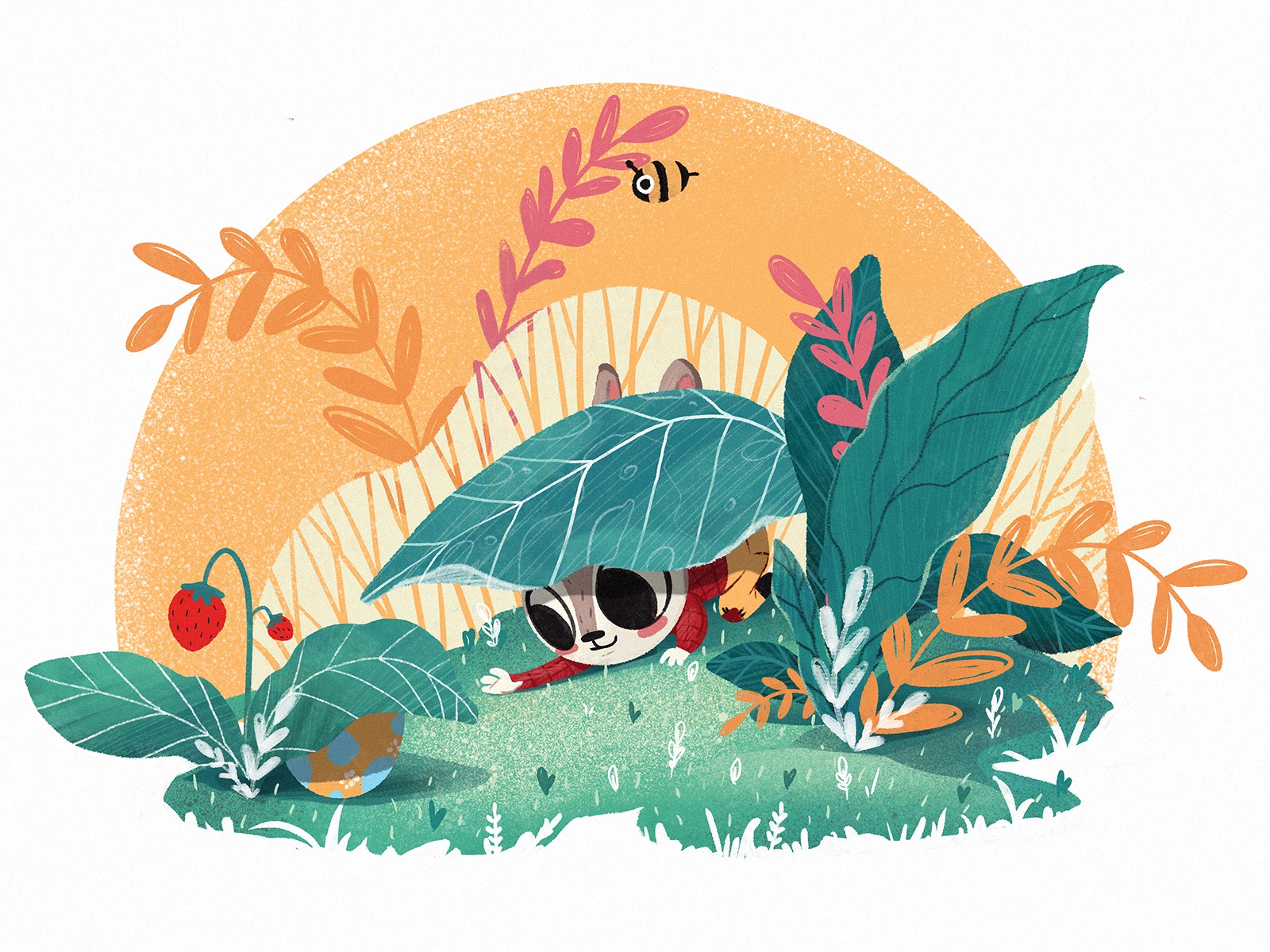
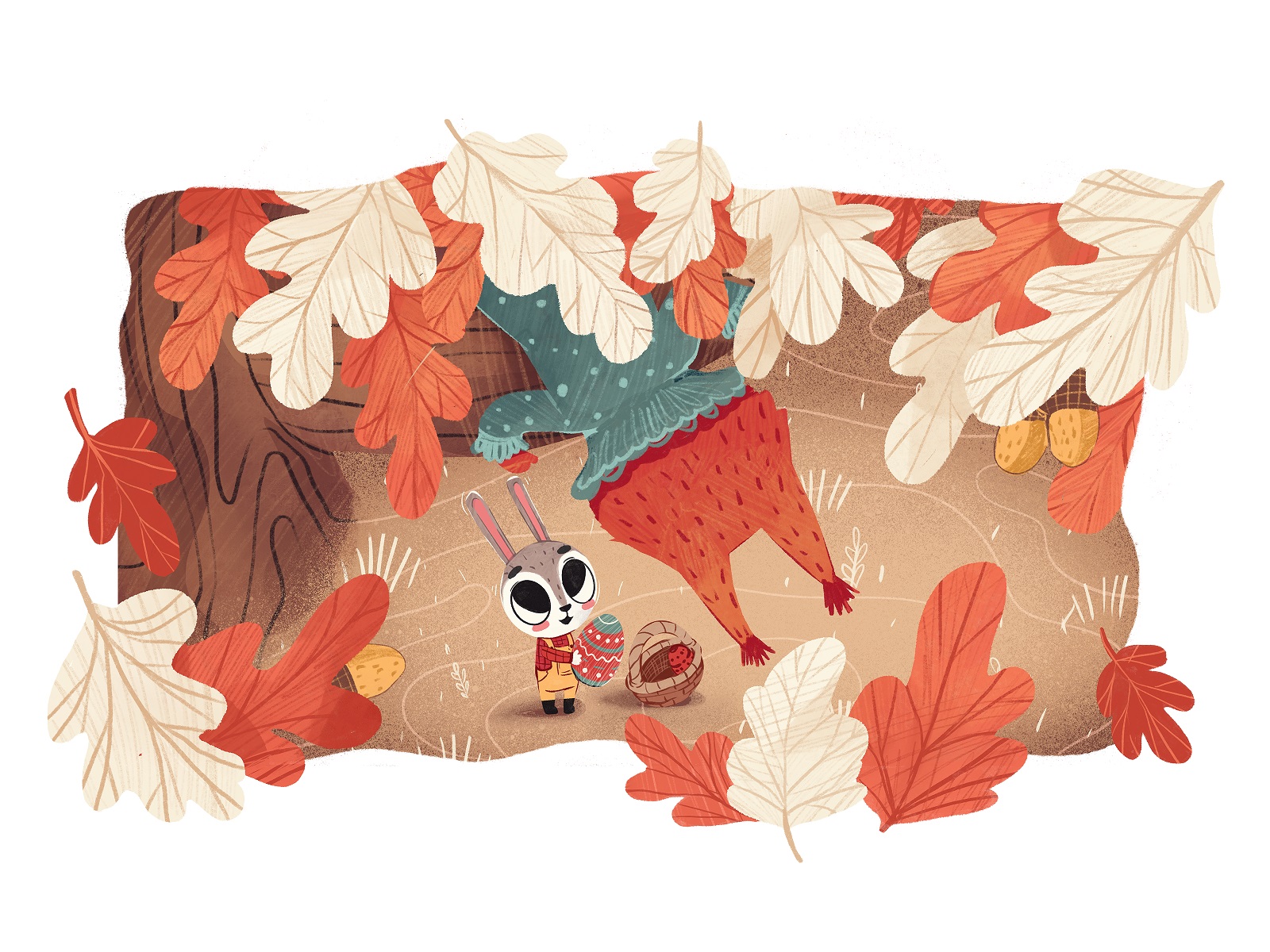
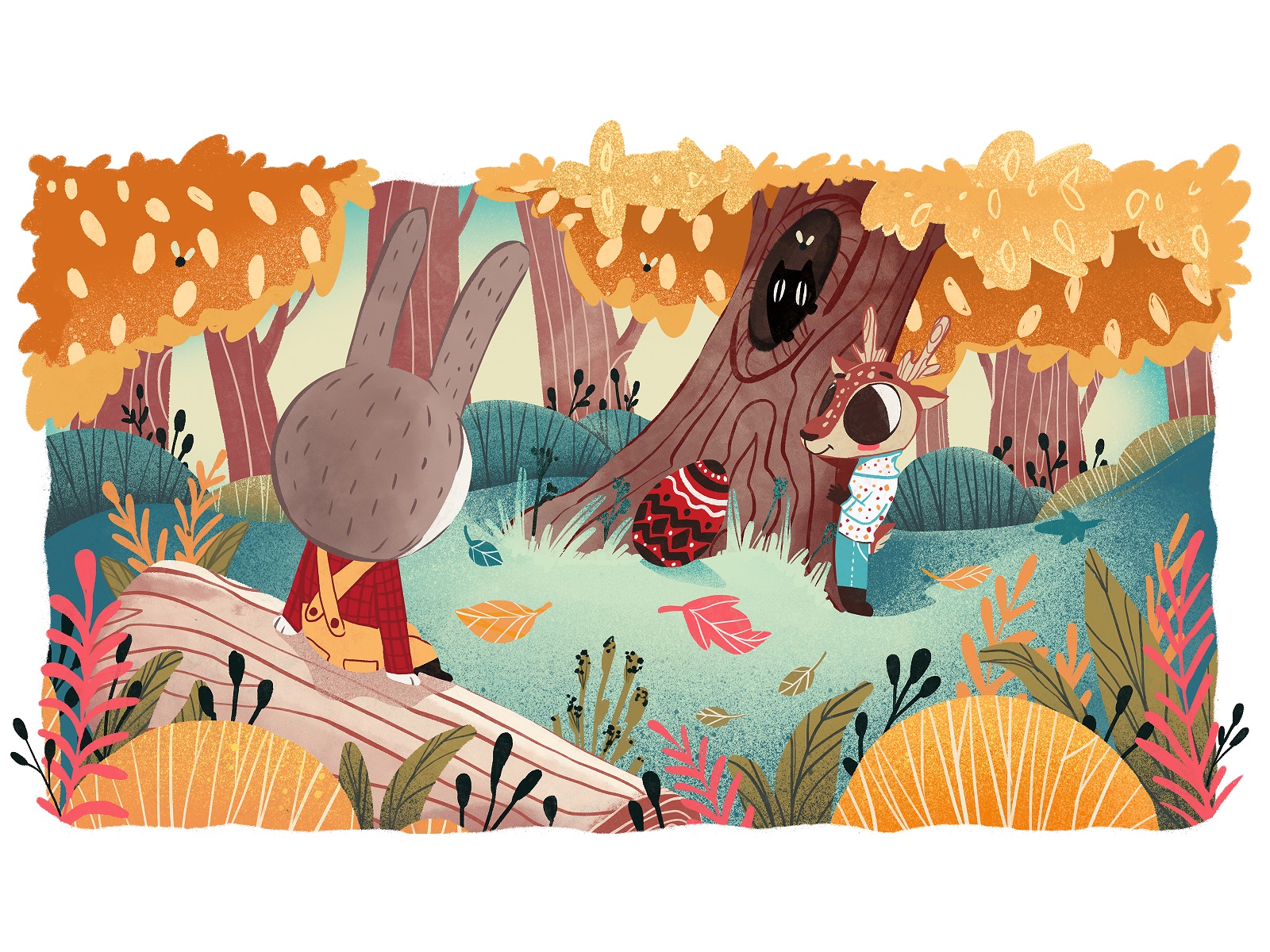
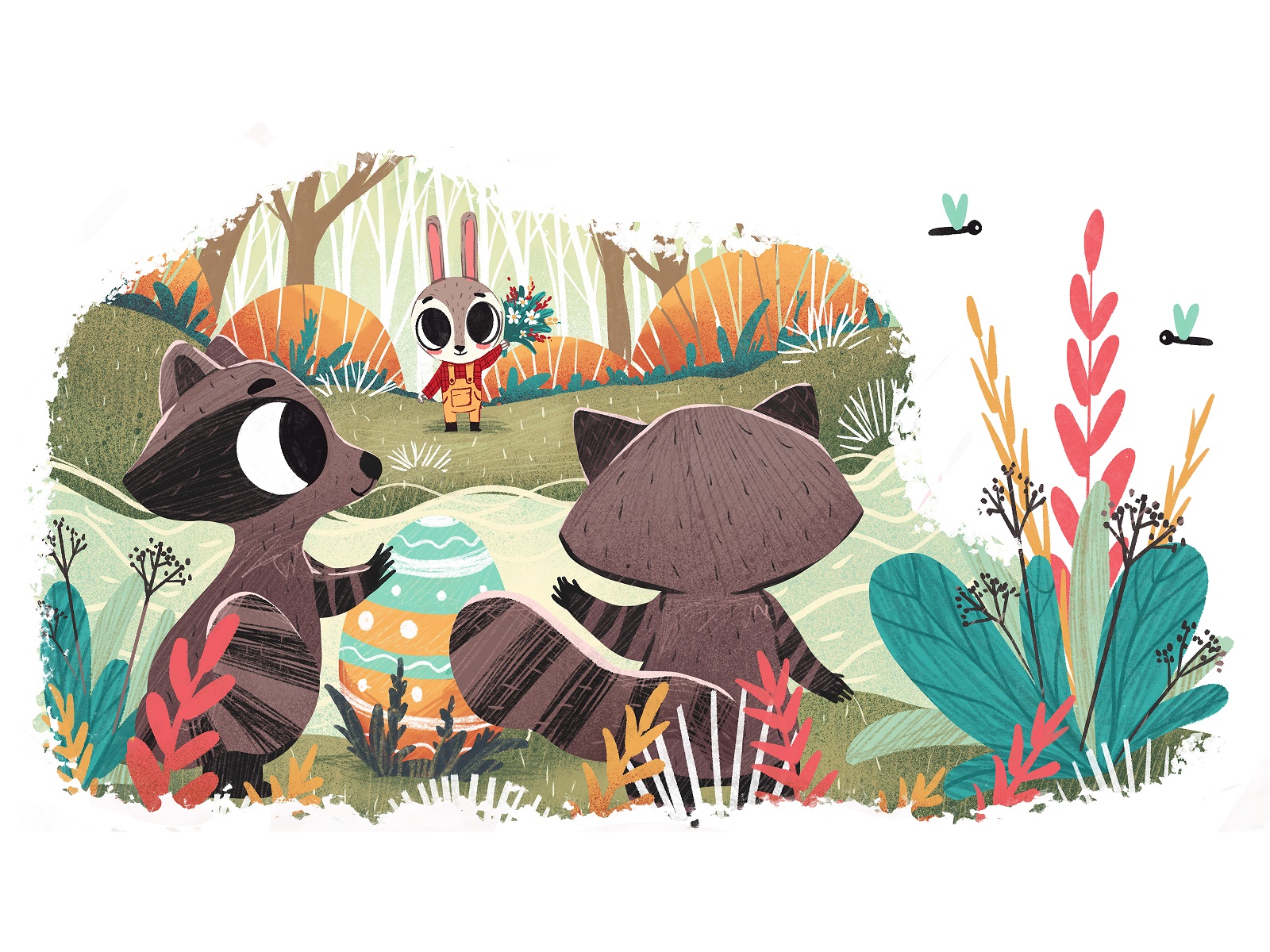
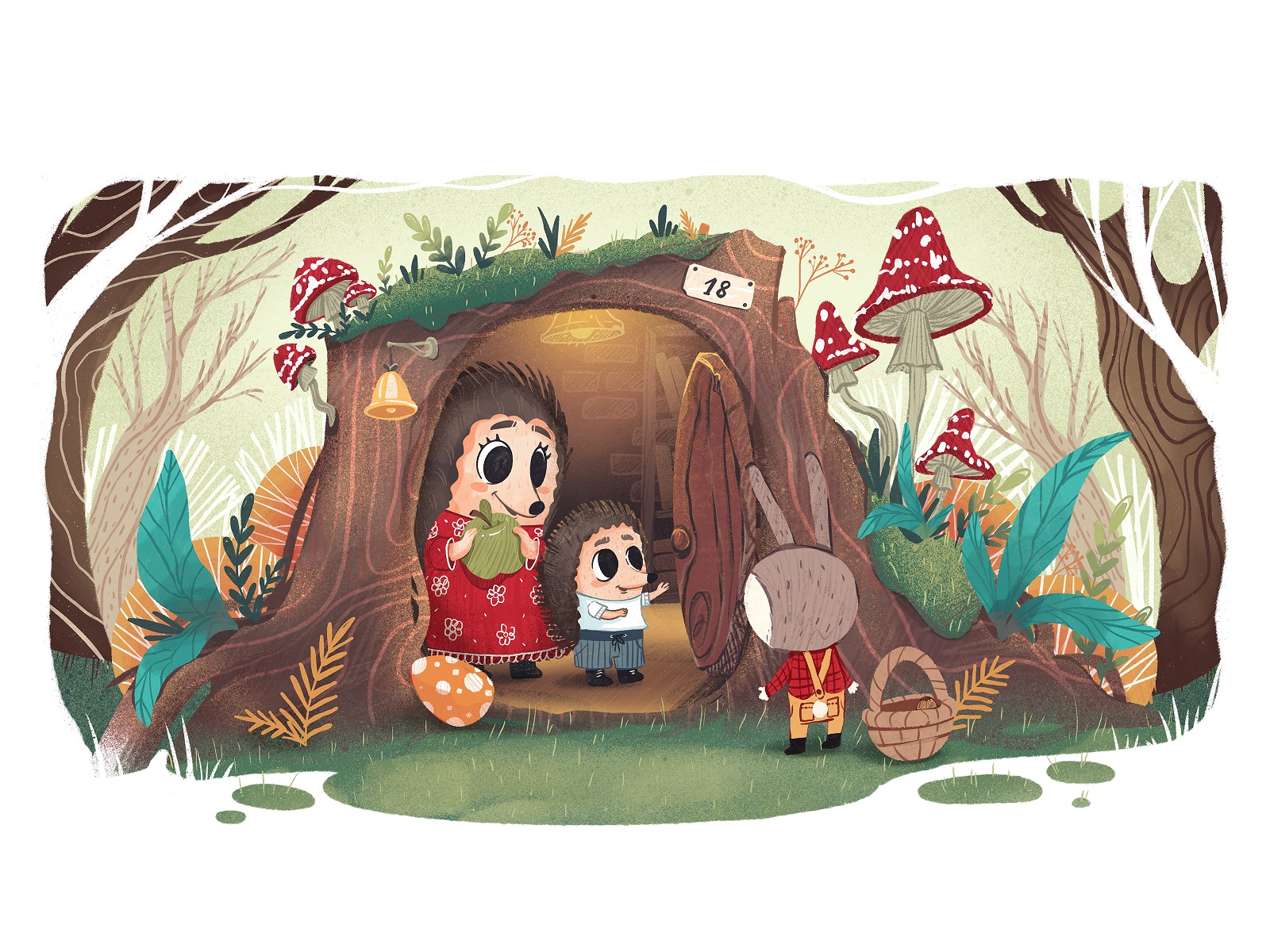
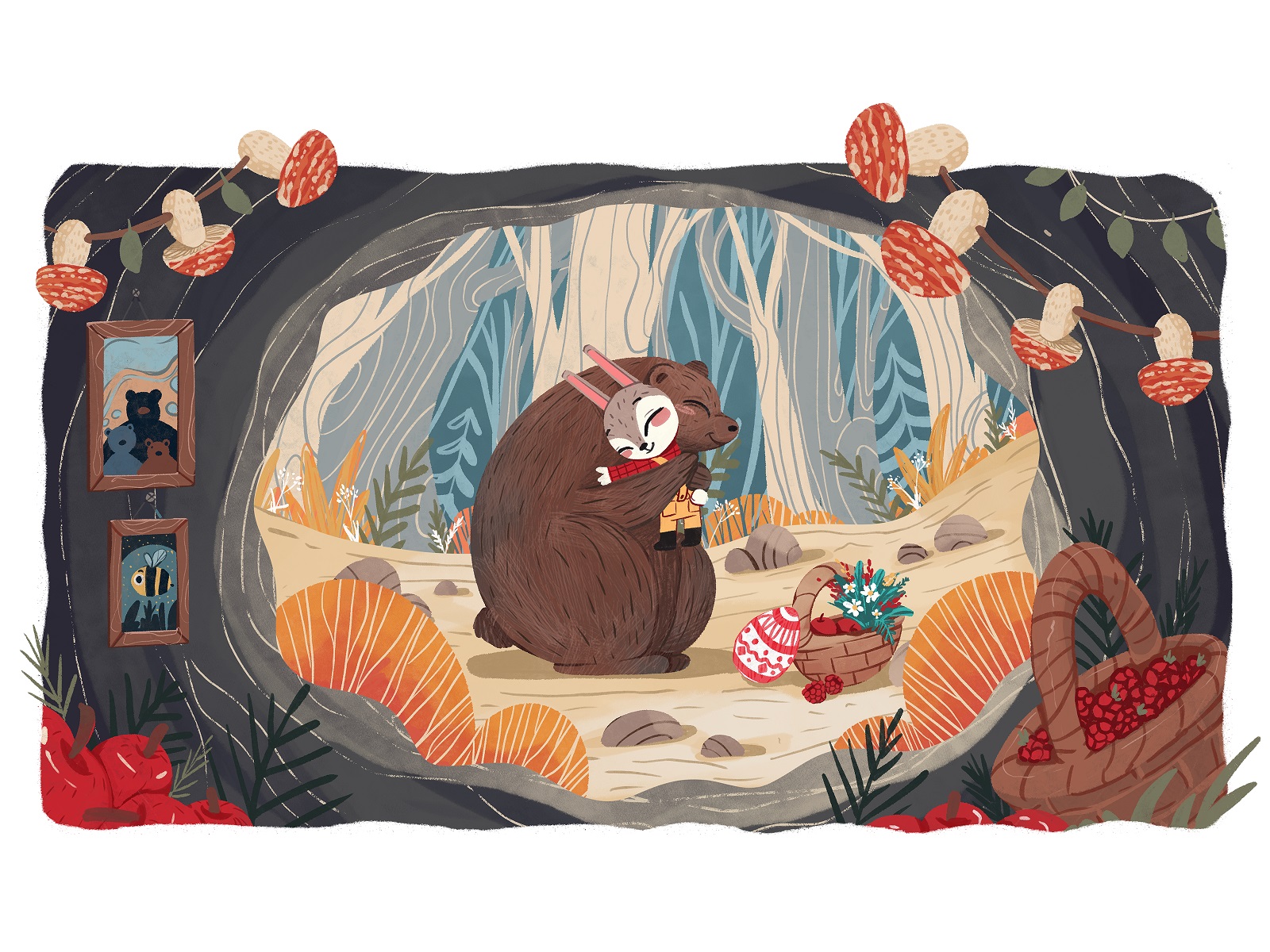
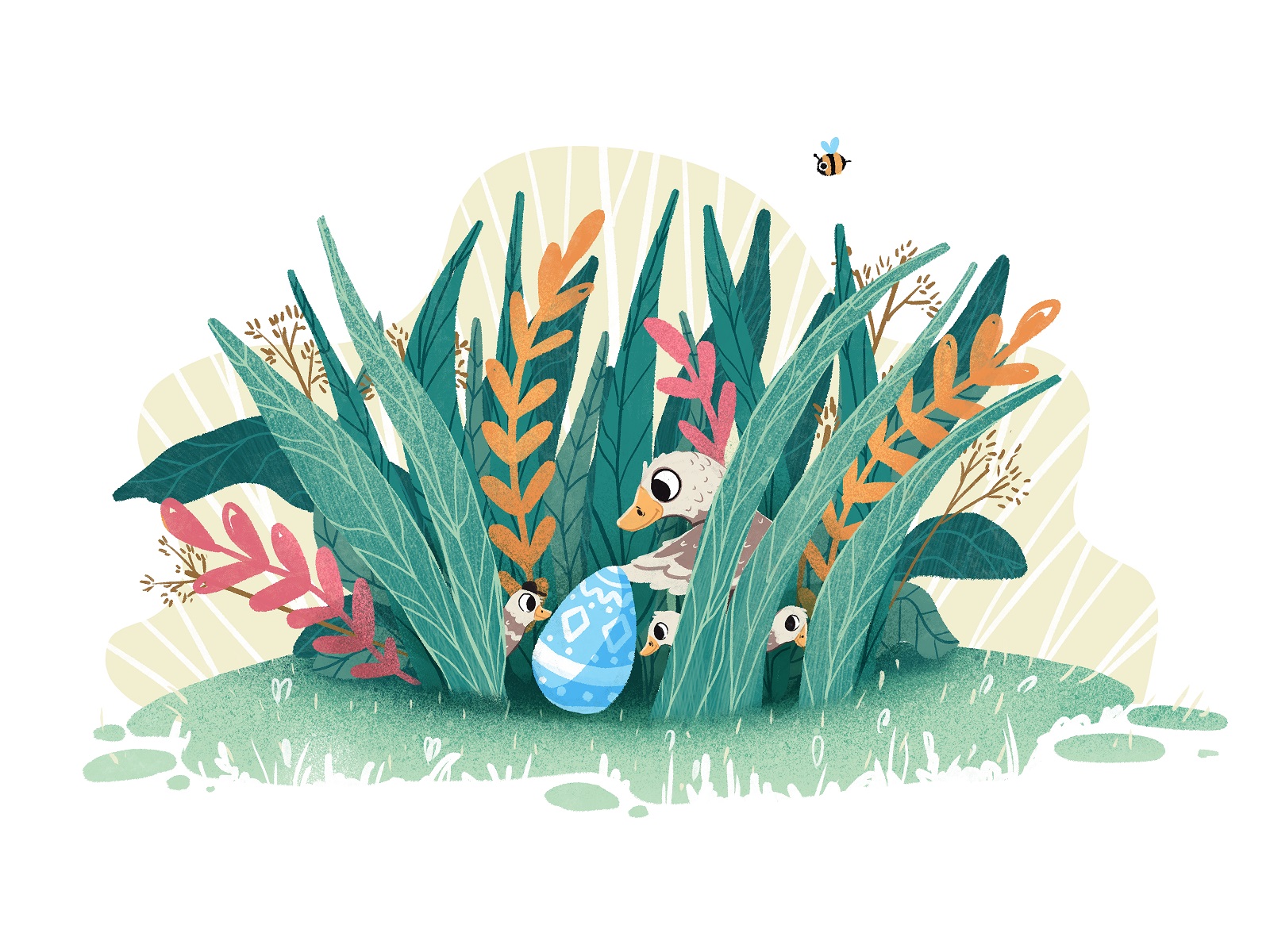
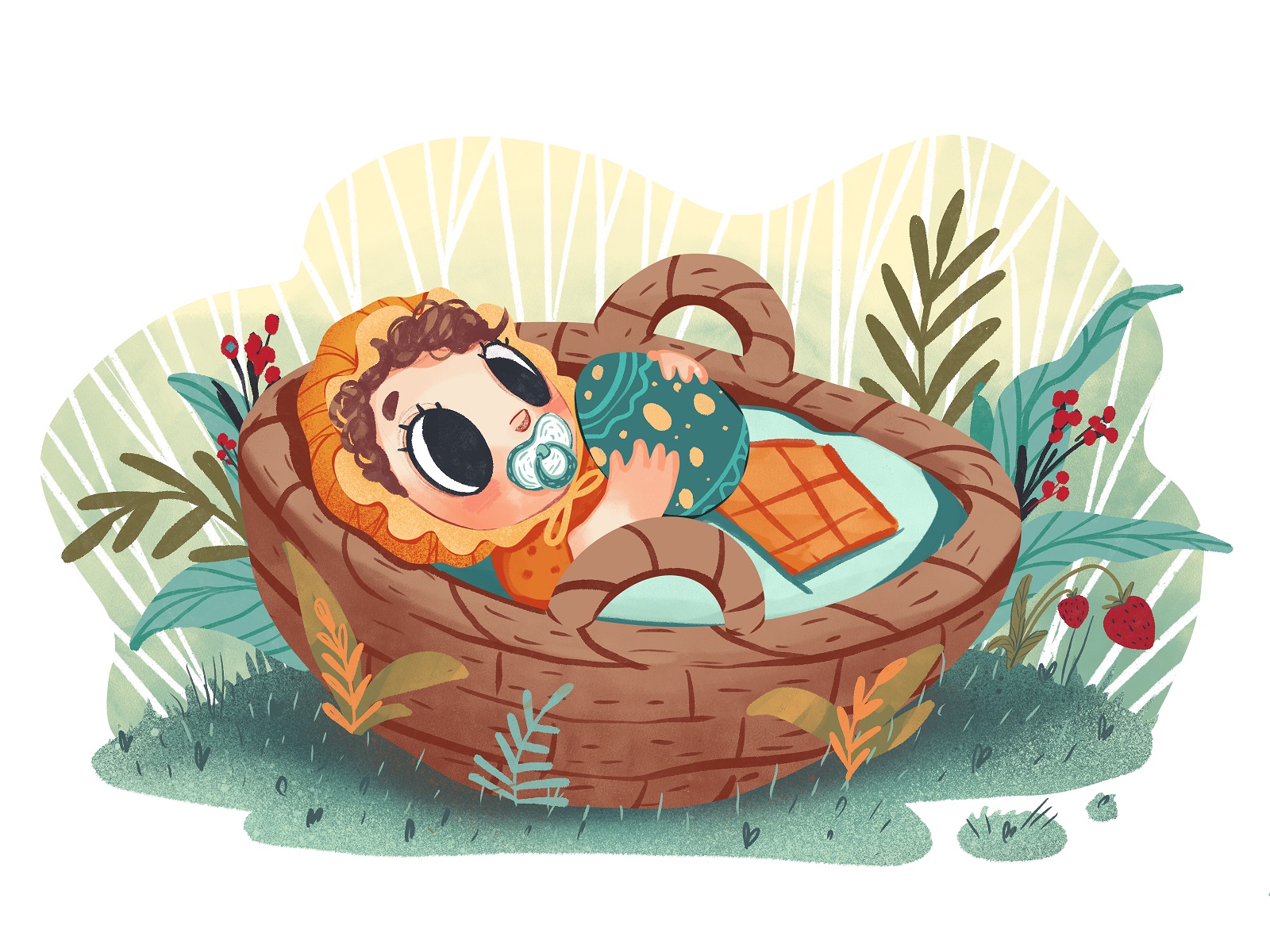
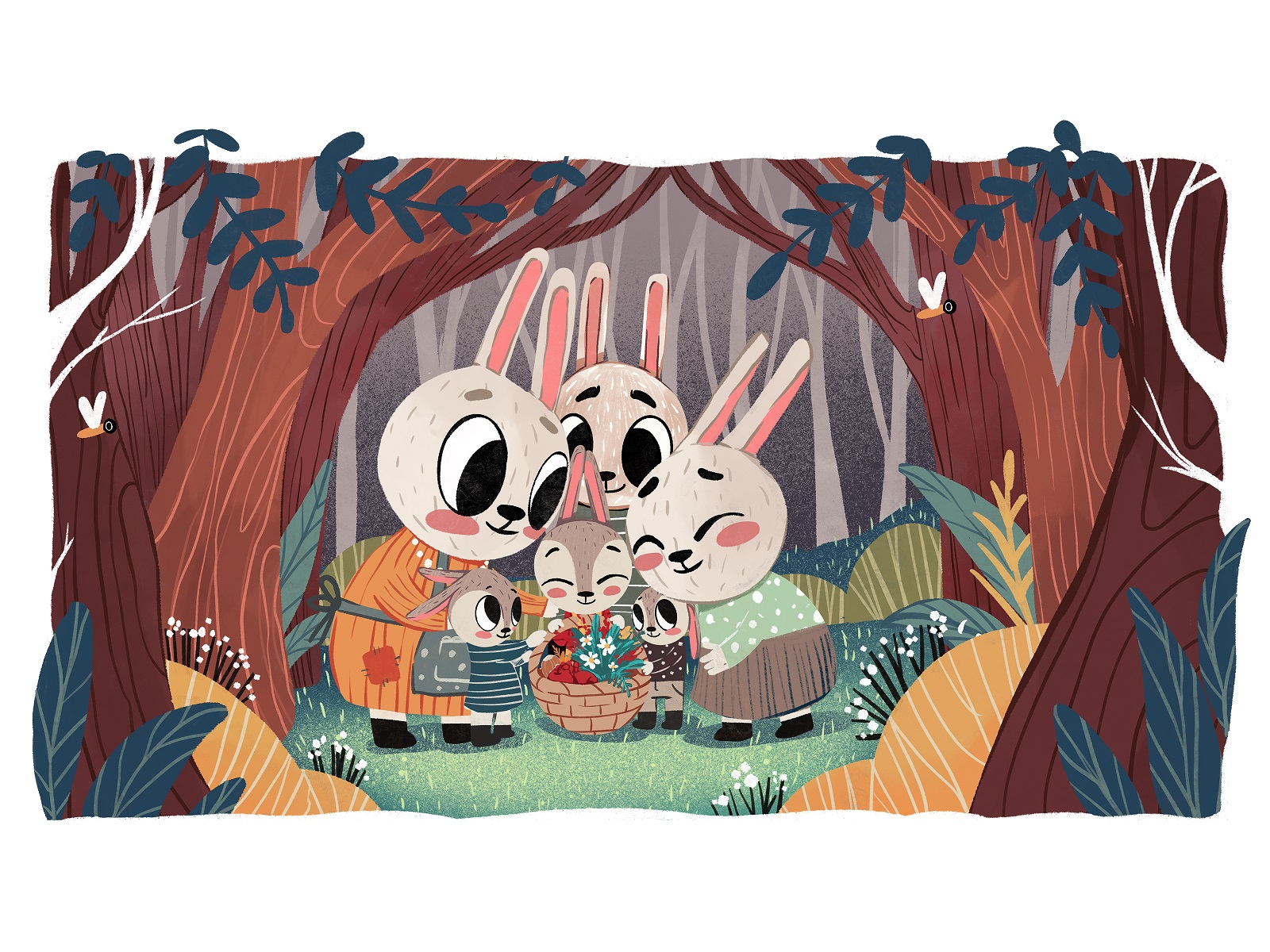
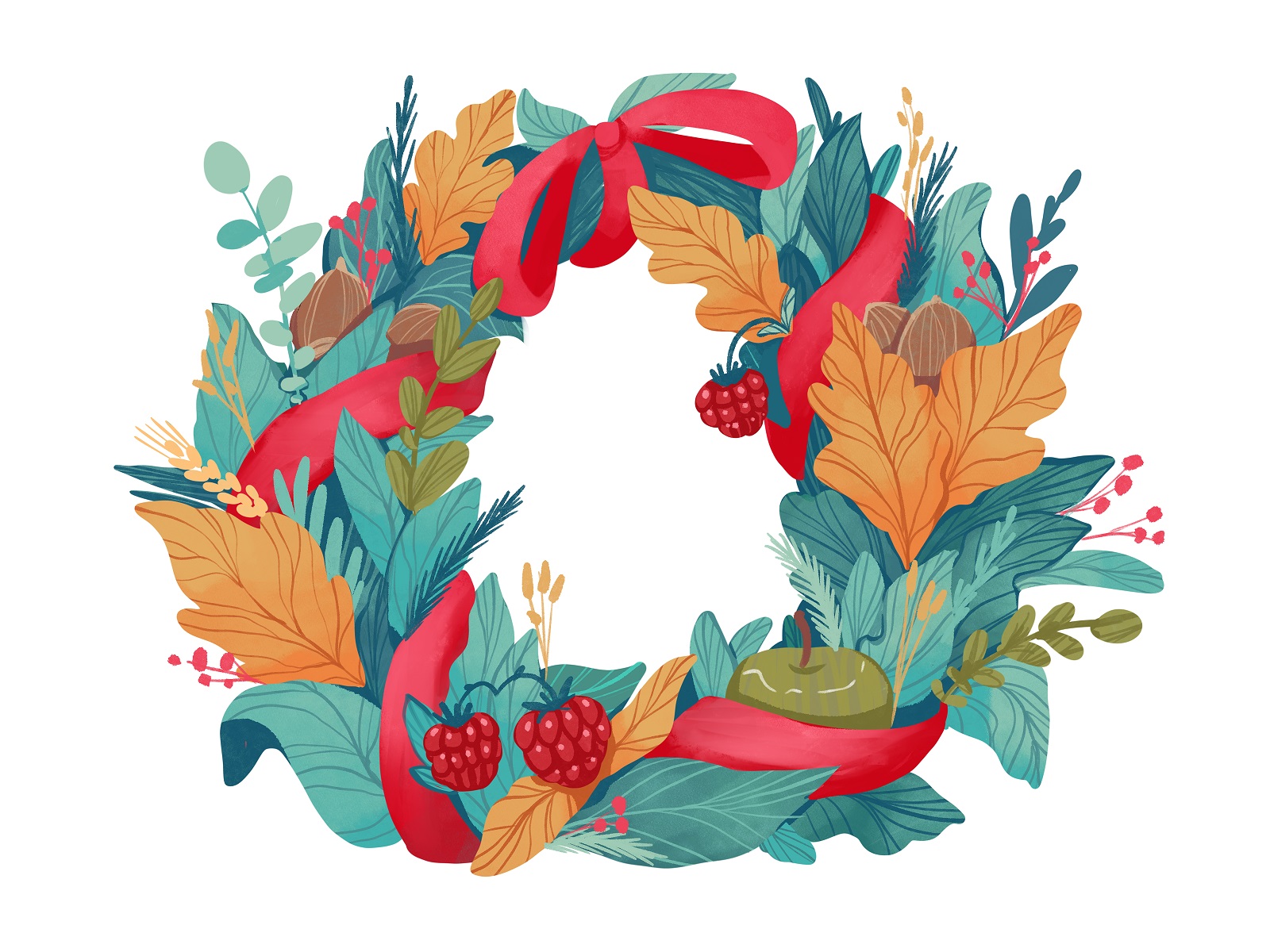
The illustrator chooses the color palette close to the natural colors of the spring forest, with prevailing “earth tones” such as balanced, muted, and calm mixtures of browns and tans as well as green, blue, yellow, orange, and red, with no overbright and acid tones, friendly and inviting. The variety of facial expressions fills the visual story with emotions and positive vibes. Different small details engage into closer looking, create coziness, and set the visual connection between the episodes making the visual storytelling flawless, smooth, and united.
Together with text by Marina Yalanska, amplified with slight unobtrusive animation by our motion designer Kirill Yerokhin and custom lettering by graphic designer Arthur Avakyan, the online version of the fairytale was published with the help of Readymag, the tool we have already used in earlier storytelling-based projects such as award-winning Kubrick Life website.
Check the project on Behance and join the discussion.
Read the fairytale about Easter Bunny Adventures in Ukrainian.
Case 2: Forest Friends Fairytale
This is another fairytale using the forest as a setting. Yet, in contrast to the previous case, it uses a mixture of human and animal characters, telling the story of how children got to the forest to share their superpowers to make the life of animals better, brighter, and funnier.
This story is also full of cuteness and based on a natural color palette, this time with prevailing warm colors like yellow, orange, warm shades of green and brown. The visual storytelling is united by the recurring characters – a couple of funny rabbits – that come from one episode to another connecting the artworks into one narration.
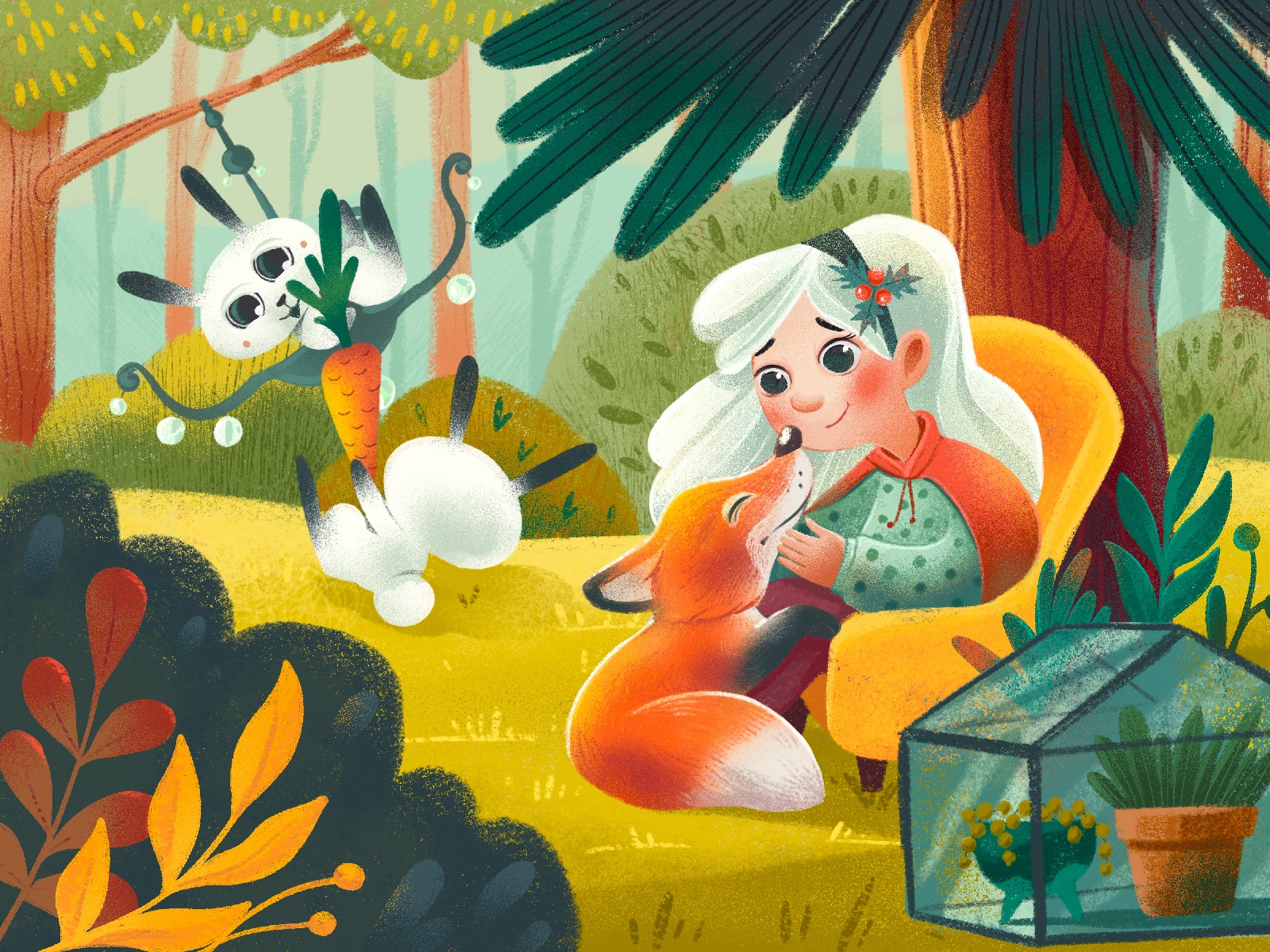
Plant and animal carer
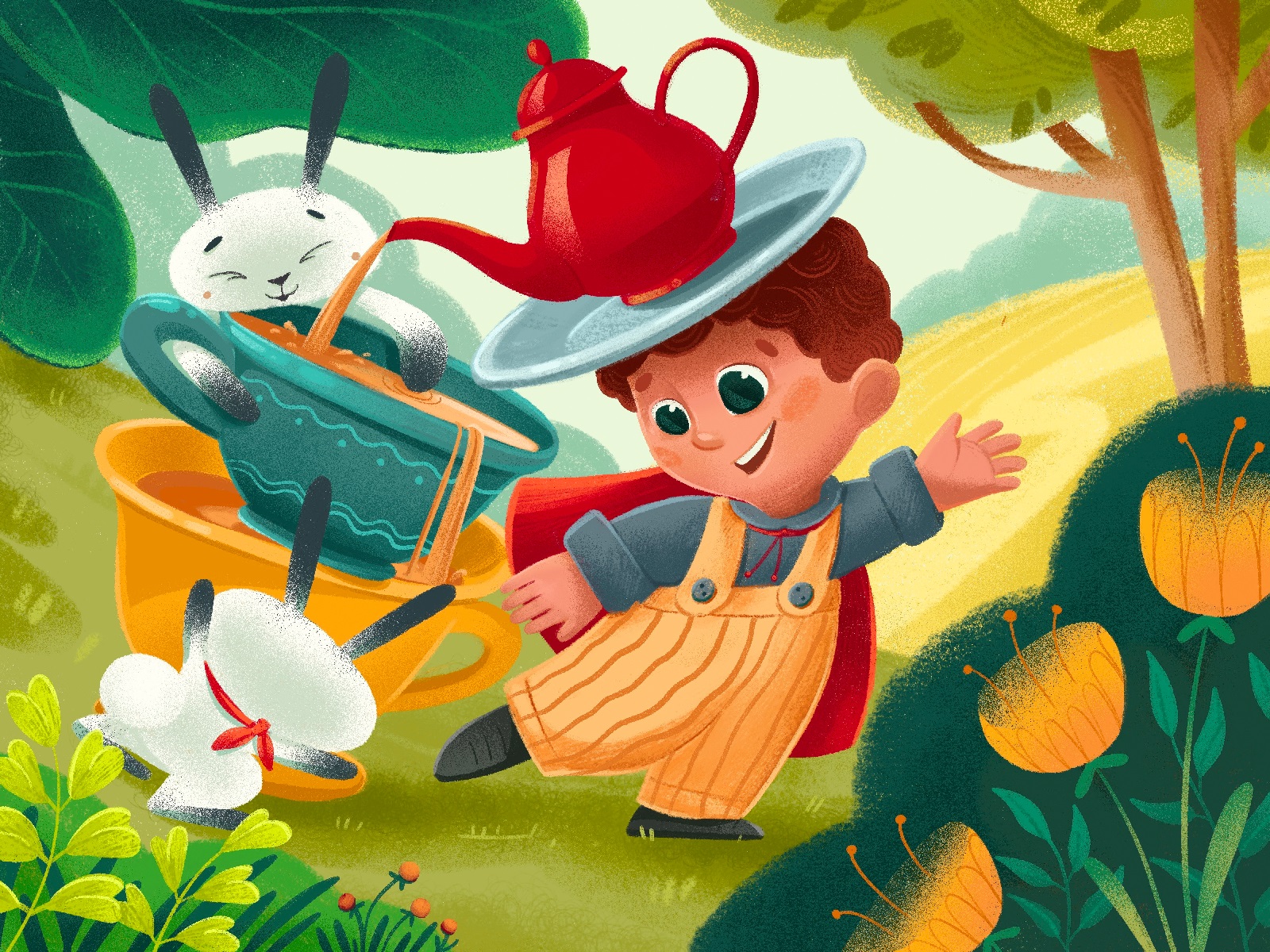
Party master
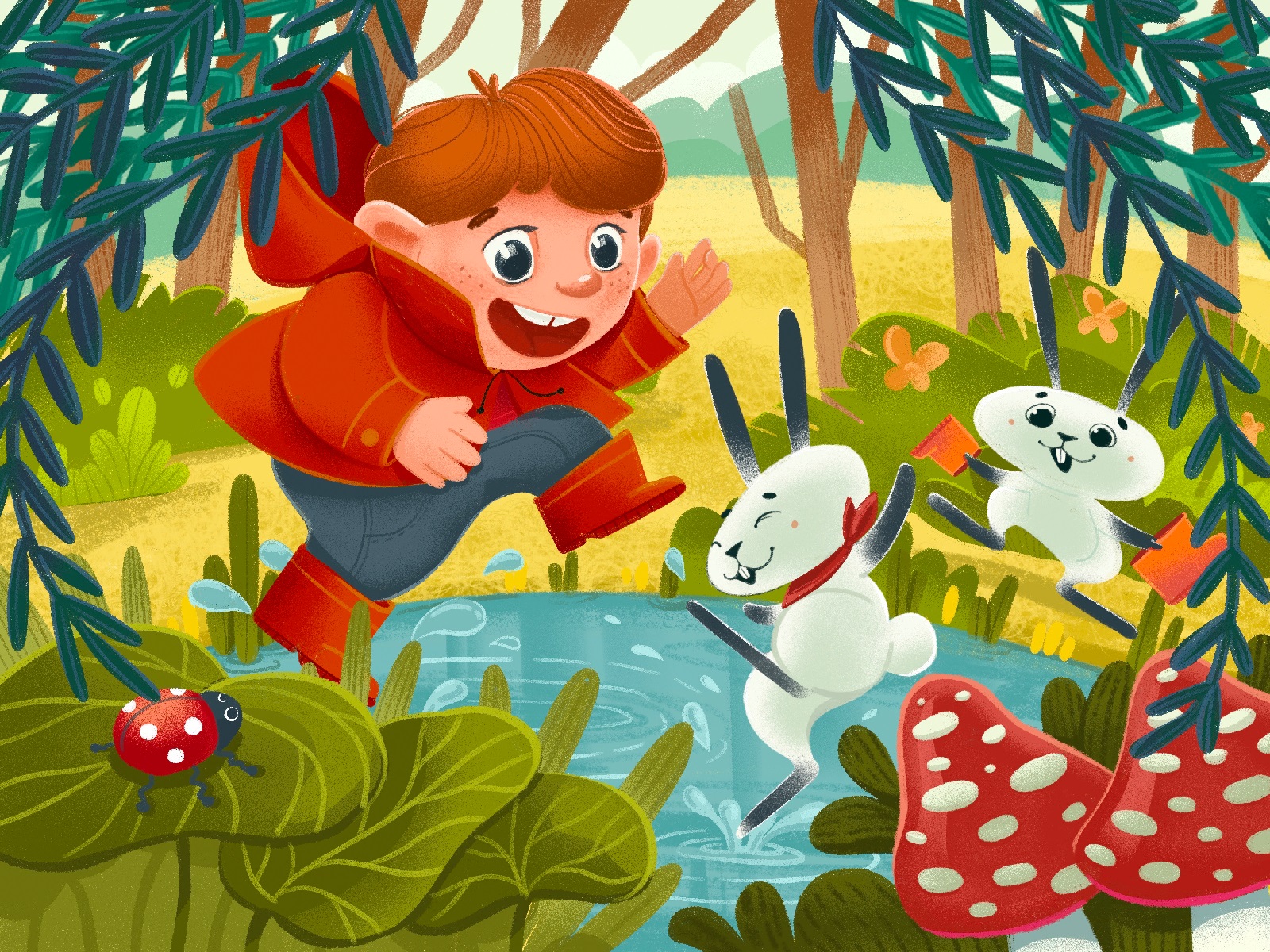
Funny walker
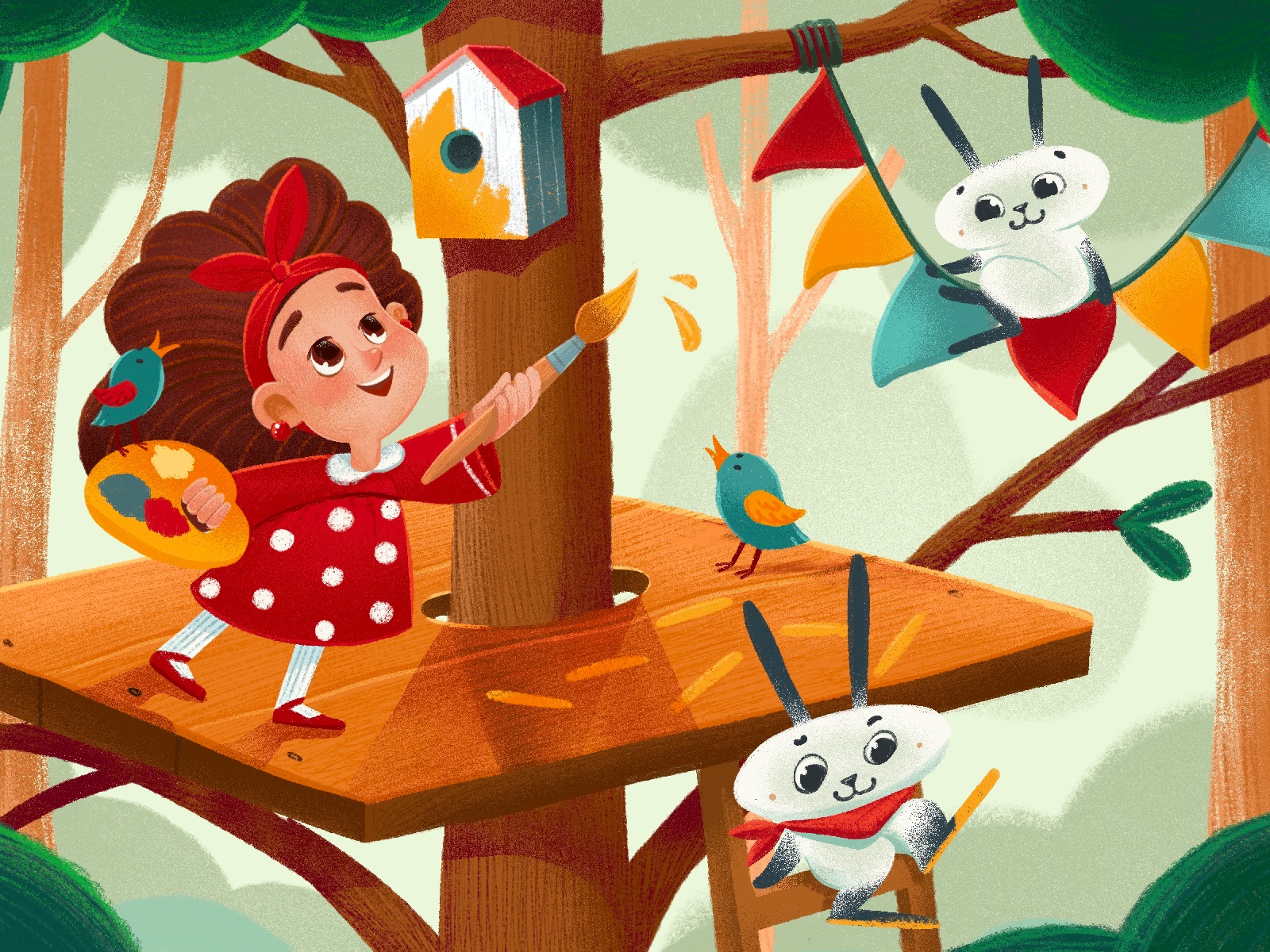
Little artist
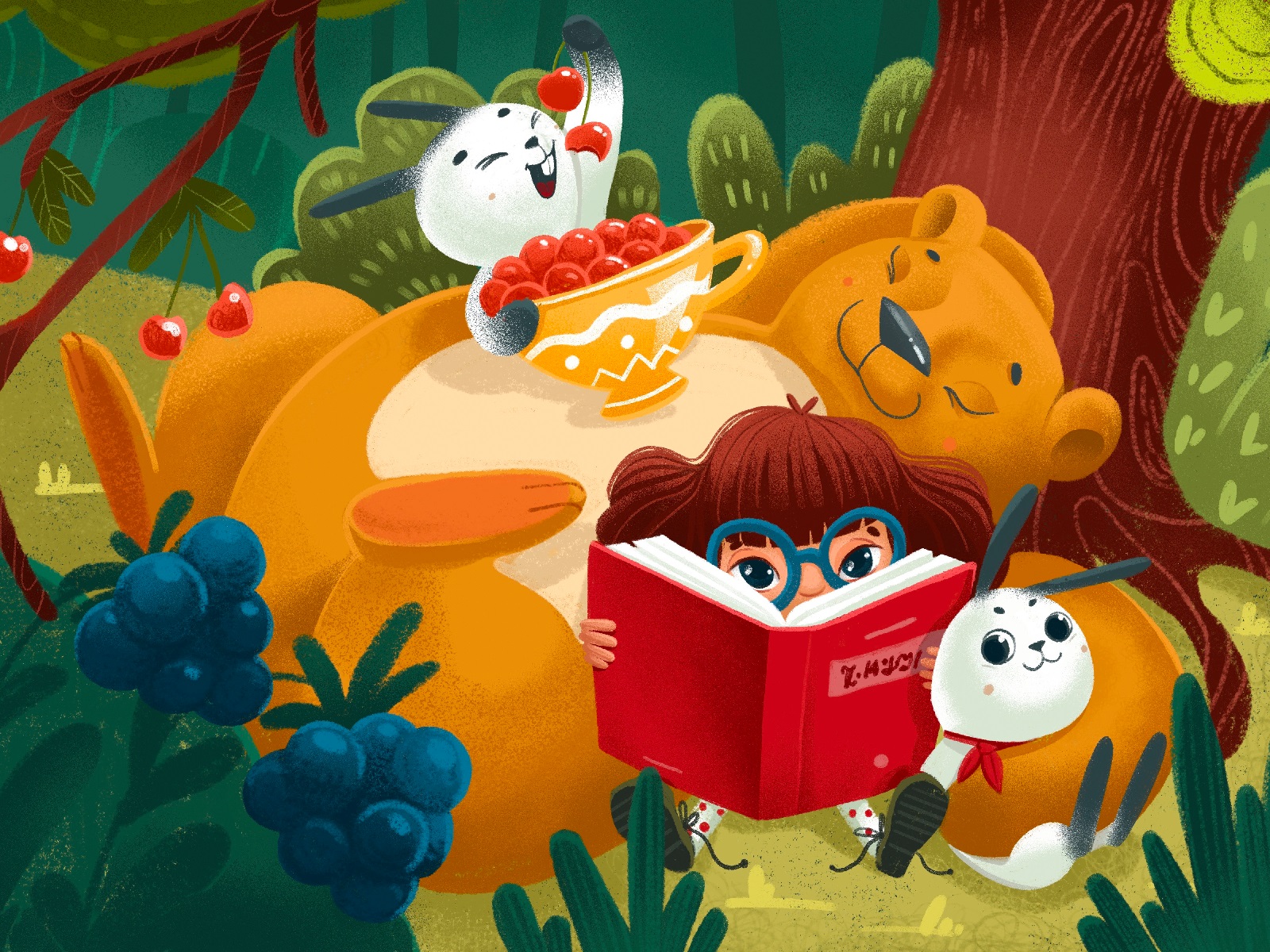
Little bookworm
Case 3: Nature Wonderland
This set of book illustrations also lets the observer to dive into the beautiful world of nature. Again, we find here the animal and human characters mixed together, but the narration and creative approach are totally different. Through the illustrations, the readers are invited into the Nature Wonderland inhabited with giant animals, beautiful and friendly to people. Here you will find a variety of huge animals, birds, and insects that work, rest, and have fun together with small humans. The color palette is bright and diverse, built on eye-pleasing contrasts and accents. Another special feature is making the animal characters “touchy”, in both literal and metaphoric meanings: it’s visually clear how fluffy and soft they are, and most of them do evoke the urge to touch and feel those textures.
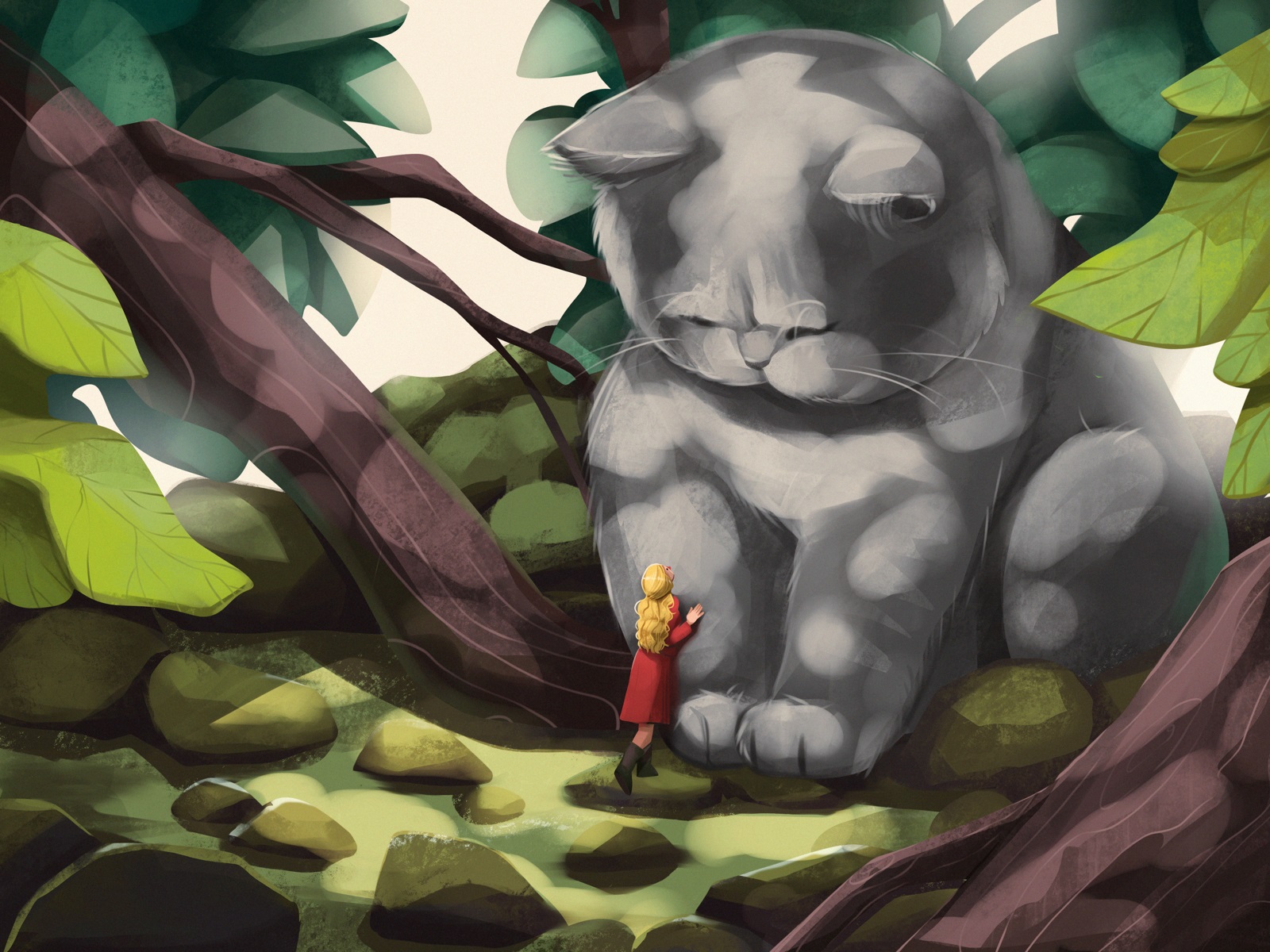
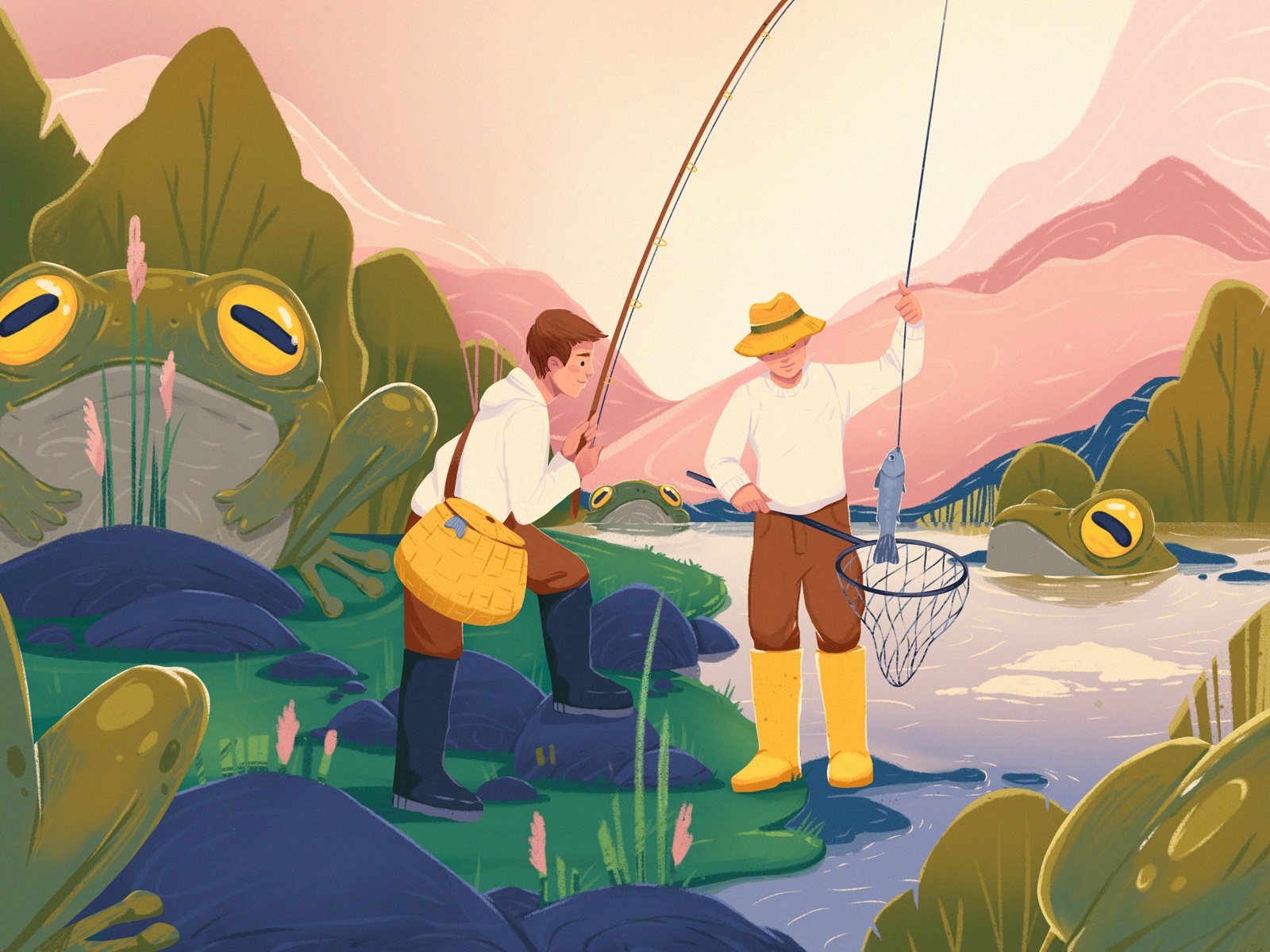
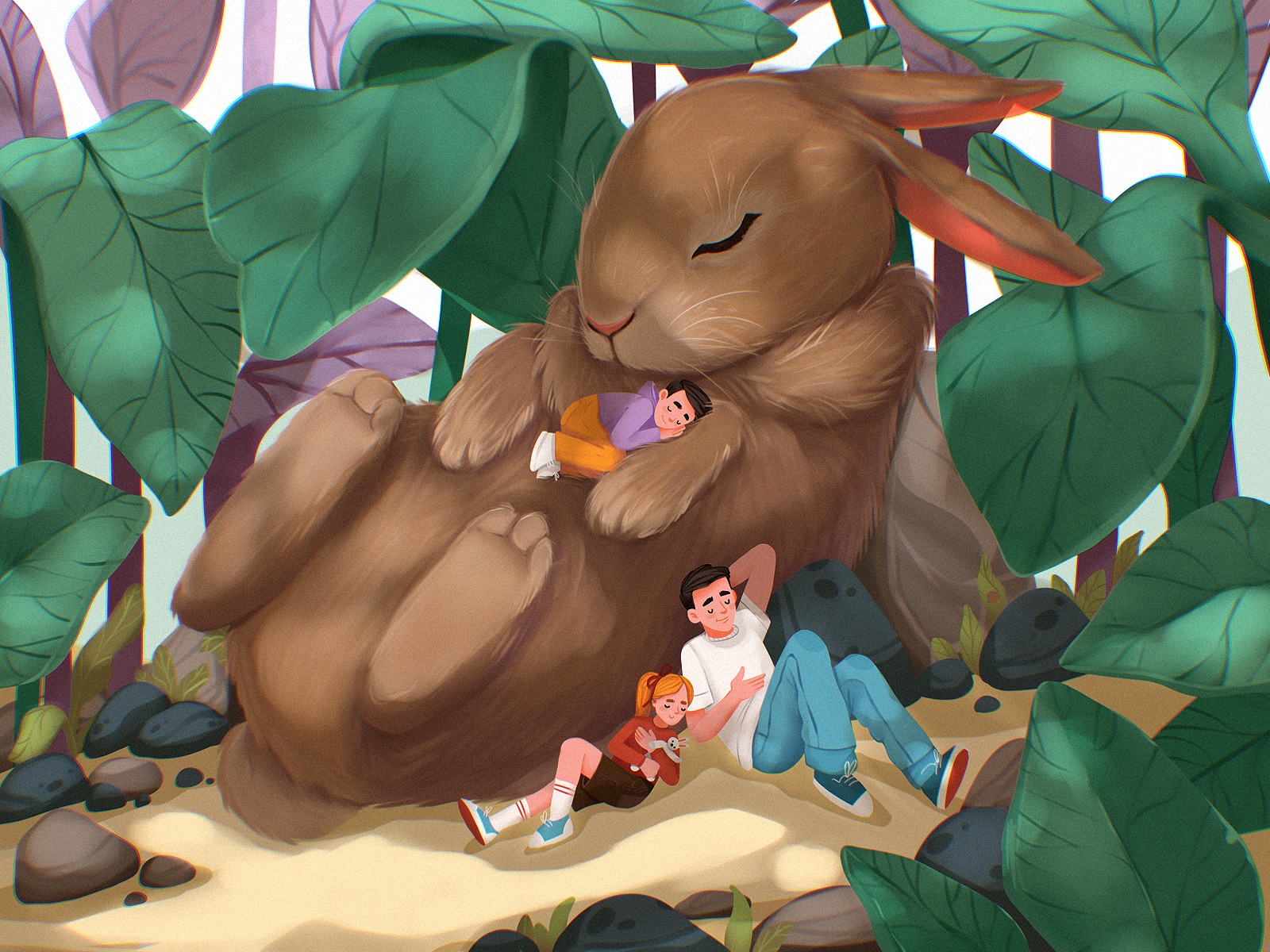
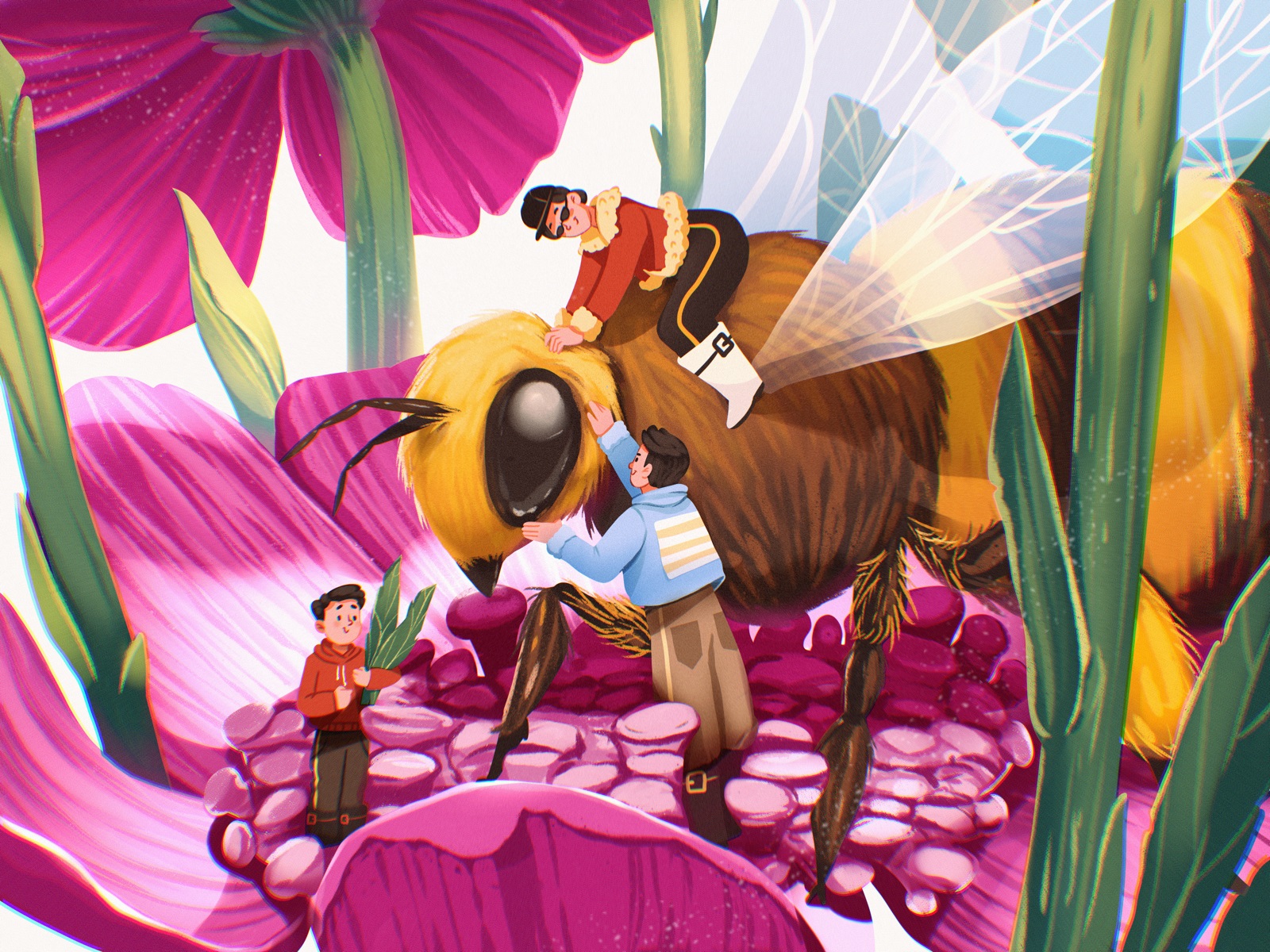
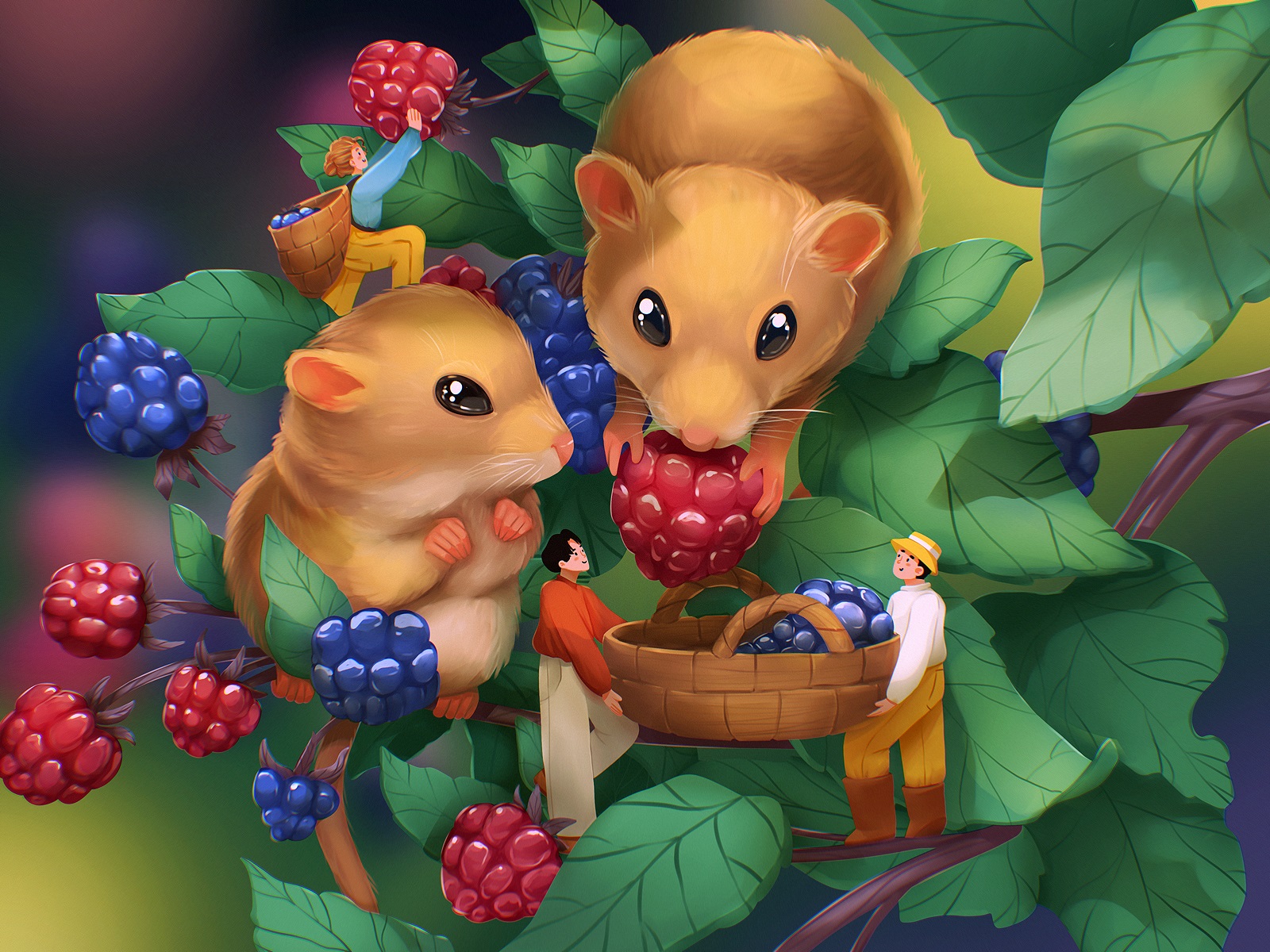
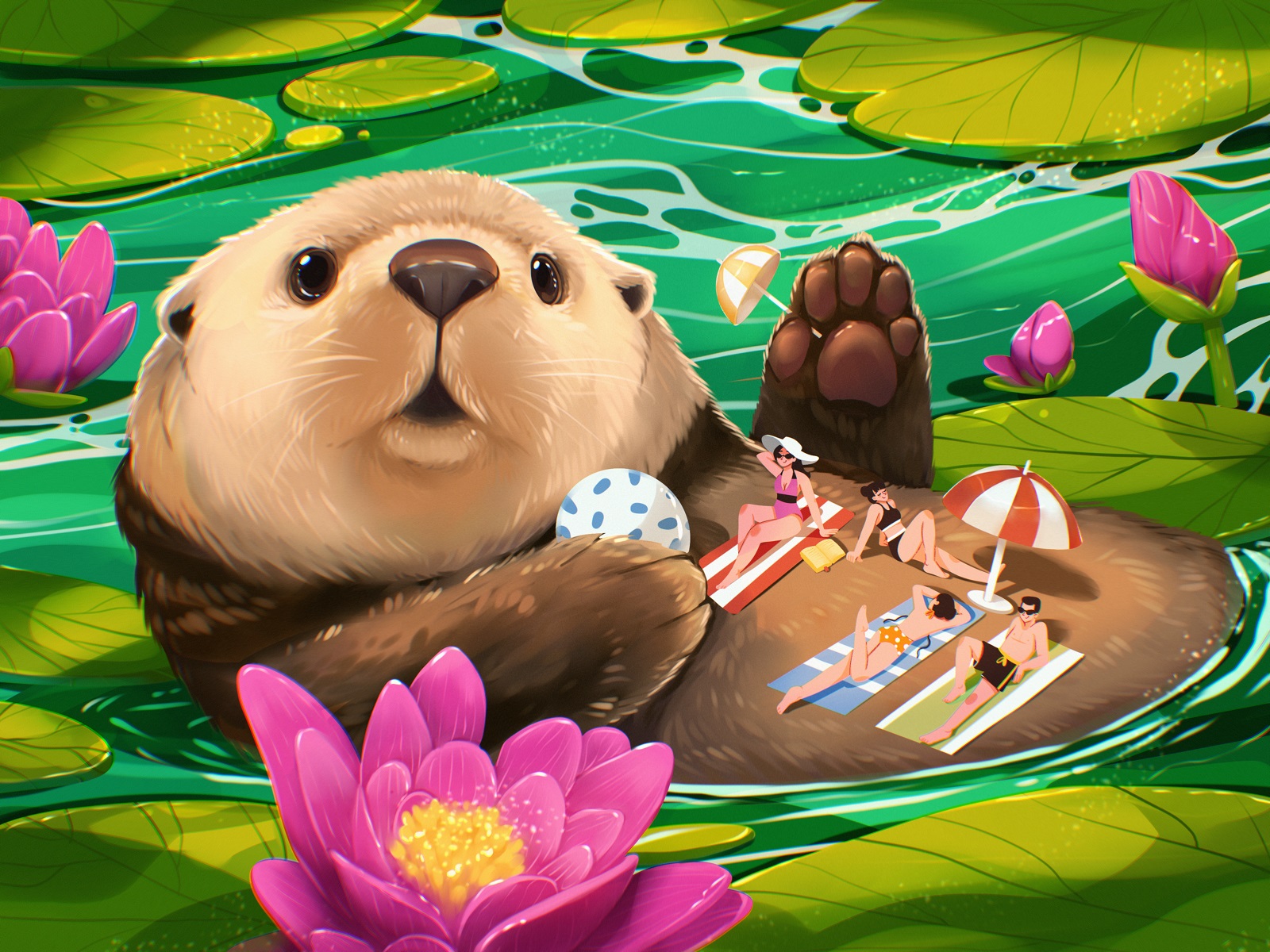
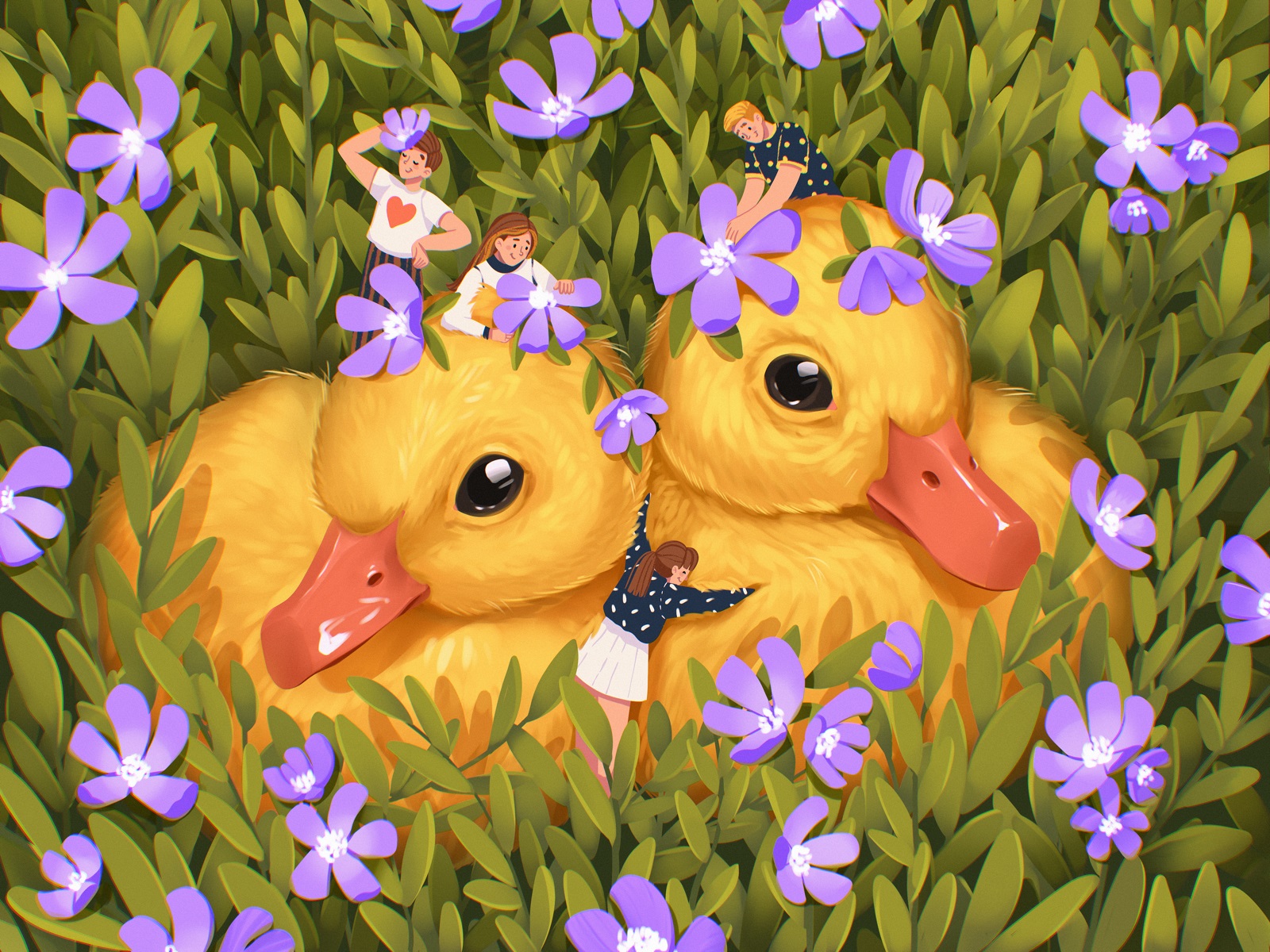
Check the project on Behance and join the discussion
All these projects show the great power of visual storytelling, especially in cases when the target audience is as highly visual-driven as children are.
Stay tuned to see more cases on illustration and design soon!
Illustration Collections and Digital Art Case Studies
If you want to see more collections of illustrations or discover how they work in particular design projects, here’s the set of posts for you.
45 Inspiring Illustrations About Workspaces, Creativity and Art
Animal World: 4 Beautiful Illustration Sets About Wildlife and Pets
Life in Pandemic Times: Theme Illustrations and Graphic Design Project
In Search of Illustration: Design Process for Illustration Set
20+ Atmospheric Digital Illustrations: From Landscapes to City Views
ABUK. Custom Book Cover Design for Audiobook App
Moonworkers. Digital Illustrations on Film Production
MYWONY. Storytelling with Brand Intro Design




